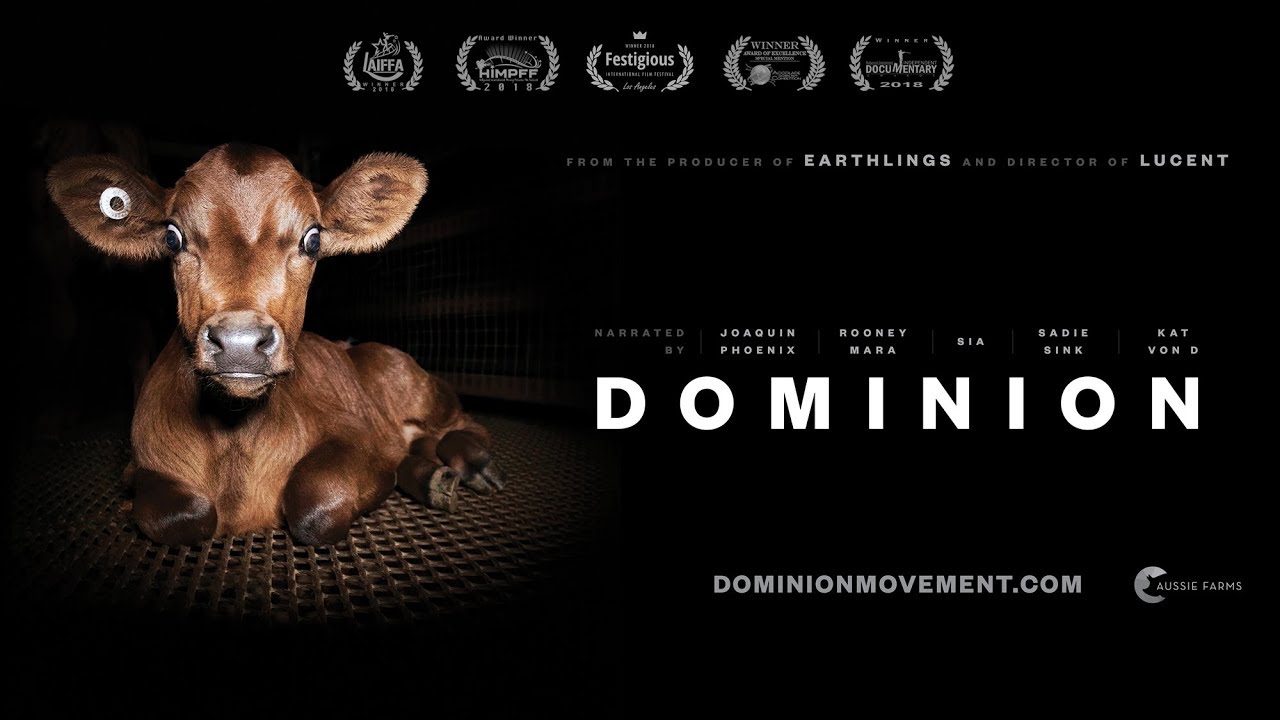Timestamps:
0:00 - Introduction
04:12 - Pigs
23:19 - Egg-Laying Hens
30:49 - Broiler (Meat) Chickens
41:11 - Turkeys
45:29 - Ducks
53:03 - Cows
1:11:07 - Sheep
1:17:19 - Goats
1:21:57 - Fish
1:26:46 - Rabbits
1:29:24 - Minks
1:30:55 - Foxes
1:32:23 - Dogs
1:37:58 - Horses
1:40:43 - Camels
1:42:16 - Mice
1:43:51 - Exotic Animals
1:46:07 - Seals & Dolphins
1:49:16 - Conclusion
1:55:47 - Closing Credits
This was the doc that sold me fully on going vegan.
If you like meat, learn more about where it comes and the practices you are promoting to access it, then decide whether or not to continue.


Most cattle are fed crops? You mean right before slaughter right? You don't think that a cow is being fed grain for its entire life before going to butcher do you?
deleted by creator
And cows are fed all sorts of garbage. Its all done because of money. Give dairy cows a few pounds of expired candy and the lactose in their milk for the day increases making it sweeter. Give meat cattle a majority grain diet for the last few months of their lives and there will be more fat in their meat, it also gives them stomach ulcers. Probably why they can't have a straight grain diet for more than a few months, as it would affect the health of the animal to the point that it would lower the weight of the animal before processing, costing somebody money.
That static 70% statistic looks bad, but like, once a crop is finished growing it starts to rot unless processed into something that has a shelf life.
So if I can grow a plot of feed corn, twice a year to supplementally feed to an animal that gets most of its food from just browsing grass and other greenery, that I won't turn into food for 1.5 to 2 years. That seems like a pretty efficient way of storing food calories. Additionally cattle/sheep/goats mow the grasslands down, transport seeds around the areas they graze, fertilize as they move, and their hooves disturb the soil to help dropped seeds make better soil contact. And chickens can lay eggs, increasing their usefulness as a source of food.
I mean, a can of corn on a shelf stops being useful until its turned back into calories, right.
I could argue that the 70% statistic means that the entire world's population is being fed from the other 30% of crops grown directly for human consumption. Which doesn't include the % of that 30% that gets trashed before being consumed.
And pastures' being "planted" usually just means seed being spread. Not really that big of a deal. Seed doesn't need to be spread after the grass is established.
deleted by creator
I'm of the mind that the clearing of the Amazon for cattle is less driven by trying to feed people and more by capitalism.
Food storage is always going to inefficient if your goal is about maximizing energy economy throughout the system. If you're just trying to feed yourself and the people around you, the metric for a successful system is about getting calories into people so that they can at a minimum, survive.
I agree, killing animals is sad and unpleasant. Its disturbing when we have to put down an old sickly pet, its disturbing when a hawk kills a rabbit for food, and I find it really rough to kill an animal with my own hands. We can choose to wall ourselves off from nature and hope for the best or try to live within it as humanely as possible. But living within this system kinda means getting your hands dirty.
deleted by creator